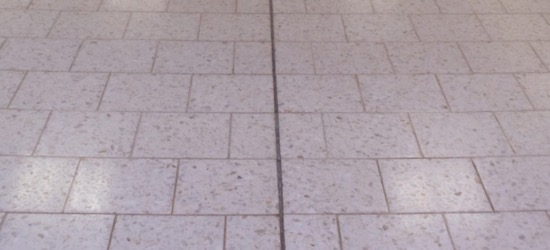Since its inclusion into the Tile Council of North America (TCNA) Handbook for Ceramic, Glass and Stone Tile Installation, the term “expansion joints” has been listed under the header of EJ171 and has been accepted by the tile industry as the guideline for their use in tile installations. However, in order to better describe their function of both expansion and contraction, they are now known as “movement joints” according to the American National Specifications Institute (ANSI) A108 and the Handbook.
The statement that I make in almost all of my Ceramic Tile Education Foundation (CTEF) classes is that movement joints (sometimes referred to as movement accommodation joints) are often misunderstood, many times not installed, but they are one of the most important listings in the TCNA Handbook.
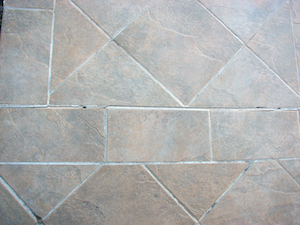

ANSI A108.02 stipulations
Section 4.4.1 states; “Movement joints are required over all construction, control, and expansion joints in the backing and where backing materials change or change direction including terminations of tilework where it abuts restraining or dissimilar surfaces.”
Section 4.4.2 states; “Movement joints are a requirement for tilework. (See A108.01-3.7).
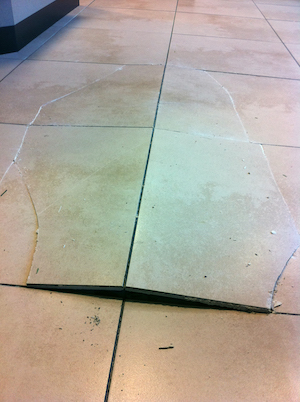
These two statements clearly tell the tile contractor that movement joints are a must. Several years ago, I received a call from tile contractor, who I knew personally. He solely installed tile on large commercial projects where he installed movement joints as shown on the plans and specifications. During a slow time in his work schedule, a friend asked him to install his kitchen floor of approximately 200 sq. ft., which he did. Several months later, his friend called to say that his kitchen now had a large hump in the middle of the floor. The installer went to view the bulge in the floor, which is known as tenting. Subsequently, he called me to determine the cause of the tenting. I discovered there were two skylights in the ceiling and large windows along the southwest side of the house, resulting in large amounts of sunlight heating the floor causing it to expand. When I asked if he had a perimeter joint (along the walls and cabinets) and movement joints in the body of the floor, he said no, since it was a residential job. He thought movement joints were only required on commercial work. I explained movement joints are required in all residential and commercial tile installations. Sadly, he learned a very expensive lesson having to remove and replace the floor at his expense.
As seen above, perimeter and field movement joints within a tile installation, both residential and commercial, are essential and required. EJ171 provides general recommendations and guidelines by which movement joints are included in all tile installations.
Responsibility of movement joint design
Method EJ171 states: “Because of the limitless conditions and structural systems on which tile can be installed, the design professional or engineer shall show the specific locations and details of movement joins on project drawings.”
This statement is extremely valuable to the tile installer. It clearly places the design and location of sealant joints on the shoulders of the design professional and not the installer. If the tile installer is coerced into providing the design and location of the movement joints, he or she will be responsible if a failure occurs. As stated, the installer should never accept this responsibility. The tile professional can and will install movement joints as directed by the plans and specifications, but that is where his or her function begins and ends.
Location and frequency of joints
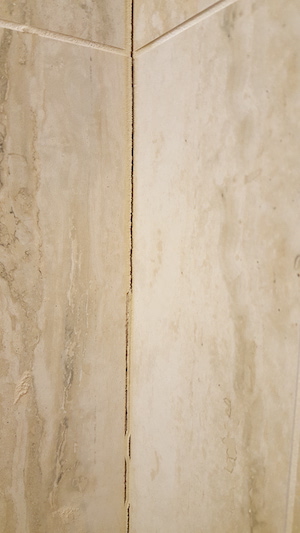

- Interior – maximum of 25′ in each direction
- Exterior – 8′-12′ in each direction. More frequent joint placement may be required depending on materials and environmental conditions.
- Interior tile work exposed to direct sunlight (heat) or moisture – maximum of 12′ in each direction. (This is what my installer friend should have followed)
- Above-ground concrete slab substrate – maximum of 12′ in each direction.
- Perimeter Joints – movement joints are required where tilework abuts restraining surfaces such as perimeter wall, dissimilar floor finishes, curbs, columns, pipes, ceilings, and where changes occur in backing materials, but not at drain strainers. (This, too, should have been part of the plan for the above installer as well.)
- Change of plane, exterior – movement joints required at all inside and outside corners.
- Change of plane, interior – movement joints required at all inside corners.
Joint width
- Exterior – width shall be a minimum 3/8″ for joints 8′ on center and minimum of 1/2″ for joints 12′ on center. Minimum widths must be increased 1/16″ for each 15°F tile surface temperature change greater than 100°F between summer high and
winter low. - Interior – perimeter joints at perimeter walls – not less than 1/4″ and commonly covered by tile trim, cove base, or shoe molding.
- Perimeter joints, other than perimeter walls – preferred not less than 1/4″, but never less than 1/8″.
- Change of plane – same as grout joint, but never less than 1/8″.
Joint depth
- Exterior – for joints 1/2″ wide or less – 1/4″. For joints greater than 1/2″ wide – joint depth shall be determined by a ratio of 2:1 (width/depth). For joints greater than 1″ wide – joint shall not exceed 1/2″.
- Interior – preferred not less than 1/4″ nor greater than 3/8″ (width/depth ratio not applied for static joint).
Materials
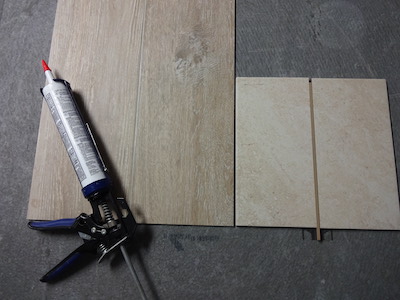

- Backup strip (backer rod) shall be flexible and compressible type of closed-cell foam polyethylene, butyl rubber, or open cell and closed cell polyurethane, rounded at surface to contact sealant, as shown in details, and as recommended by sealant manufacturers.
- Suitable sealants include silicone, urethane, and polysulfide. Install sealant after tilework and grout are dry. Follow sealant manufacturer’s recommendations.
Additionally, in the past, movement joints were required to be in straight lines as dictated by the ANSI requirements and Handbook guidelines which many times placed them through a tile pattern, disrupting the intended design. This statement is still true today when the required movement joint falls on an expansion joint in the concrete substrate. However, generic movement joints are now permitted as seen in ANSI A108.01 section 3.7.5:
Non-linear movement joints ANSI A108.01 section 3.7.5
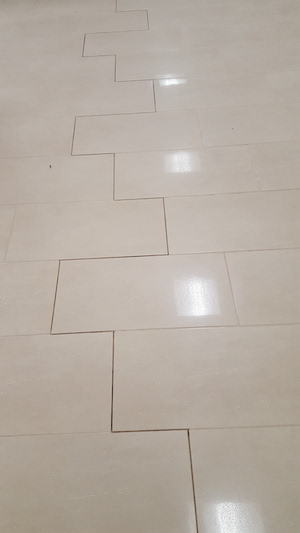

“Generic movement joints (also known as field joints) in the tilework not located over an existing construction joint, contraction (control) joint, or isolation joint in the substrate, can be installed in a non-linear configuration (e.g., sawtooth, toothed, zipper), which may be necessary for tile patterns with non-continuous grout joints. The generic movement joint must be properly designed per EJ171 of the TCNA Handbook for Ceramic, Glass, and Stone Tile Installation, and the sealant shall meet ASTM C920, or as indicated in the project specification. The intended application must be approved by the sealant manufacturer, and the sealant must be properly installed per the sealant manufacturer’s requirements. (See ANSI Figure 11.0).”
In conclusion, movement joints are required and will serve the installation well for many years. If they are not a part of the installation, the tile may rebel with the result being a very costly failure and replacement. Think about it before deciding.


Scott Carothers
Scott Carothers is the Acdemic Director for the Ceramic Tile Education Foundation (CTEF) and is responsible for the creation of the Certified Tile Installer (CTI) program, and is involved in the creation of the Advanced Certifications for Tile Installers (ACT) program as well as providing training to others in the tile industry.
Carothers has been involved in the ceramic tile industry for nearly 40 years and was the owner of a successful retail and installation firm prior to CTEF. He has served as President and Chairman of the Board of the National Tile Contractors Association (NTCA), Chairman of the NTCA Technical Committee, was named the NTCA Tile Person of the Year in 2005, and the NTCA Ring of Honor recipient in 2013. He is a voting member of the ANSI and the TCNA Handbook committees.


